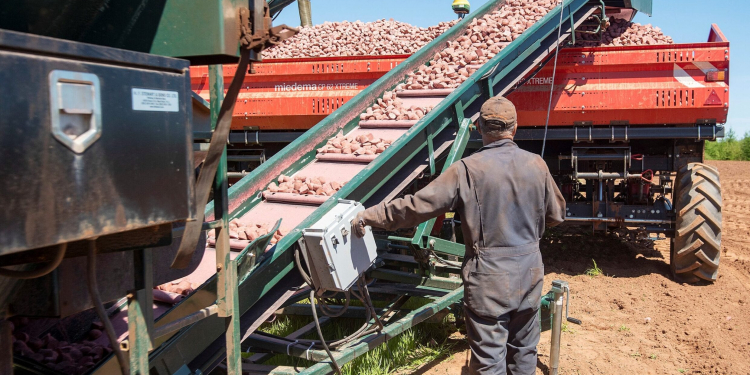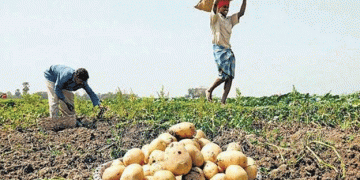A well-rounded potato disease management plan is the first step toward a successful season.

To optimize quality and improve marketable yield, here are 4 tips to start strong in 2021:
- Start with a proper seed treatment. Using a quality seed treatment helps prevent fungi from spreading in early stages of potato plant growth. By providing potato seed with protection from the moment they are in the ground, growers can start strong in the fight against soil-borne diseases and early-season pests. CruiserMaxx® Vibrance® Potato seed treatment is an example of a product that can help improve seed germination, protect against early-season pathogens like Rhizoctonia, Helminthosporium and Fusarium, and provide control of key pests, such as Colorado potato beetle and aphids.
- Apply a strong soil treatment. It is important to treat for pathogens that may have overwintered in the soil and may infect tubers. For example, Rhizoctonia solani, the pathogen that causes Rhizoctonia canker, overwinters in soil and infects potato seedlings early in the season. When left untreated, Rhizoctonia causes stunted growth in seedlings and weakened roots. Diseased roots do not spread effectively, leaving them more vulnerable to other diseases and pests. If not treated, Rhizoctonia can lead to major yield loss and disease problems year after year. Elatus® fungicide, a powerful premix formulation, provides growers with 2 active ingredients to double down on defense against soil-borne diseases.
- Extend protection as tubers develop. Early infection of the developing tubers in the soil can occur via movement of fungus spores generated from the seed or within the soil profile. To prevent this, you should make a fungicide application to young potato plants prior to row closure. An application of Amistar® Top fungicide prior to row closure helps control quick-spreading, yield-robbing diseases like black dot, brown spot and early blight.
- Prevent storage growth. Storage conditions play a large part in the spread of diseases such as silver scurf, as the fungus thrives in cool, damp conditions. Common symptoms of silver scurf include light brown lesions on tuber skin that tend to grow together and take on a silvery color when they get wet. The disease can drastically reduce marketability by causing water loss and shrinking tubers. Stadium® fungicide can help preserve the quality of your potatoes during storage by providing a barrier against the spread of harmful storage diseases like silver scurf.
In addition to an array of effective products, Syngenta also provides growers with unmatched field expertise. Watch the video below to see how Syngenta partnered with Jim Pitreau and Green Thumb Farms in Fryeburg, ME, to design a custom disease management program that reduced silver scurf and increased the quality of their potato crop. If your operation is facing disease or pest issues, your local retailer or Syngenta representative can be a partner in designing the ideal management program.







